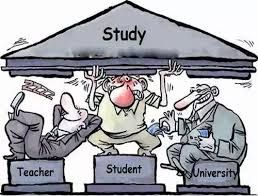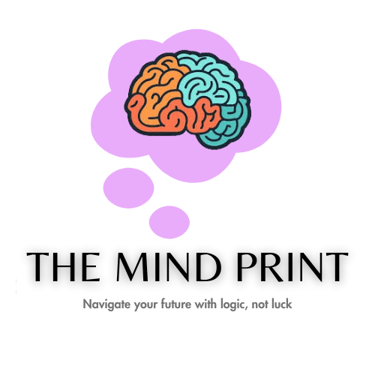Chasing Potential: The Indian Education System vs. The Ideal Dream
India boasts a vast education system, reaching millions. But does it equip them for the future? Let's dissect the current approach and envision an ideal education for our young minds.
Himanshu Sharma
6/7/20242 min read


Bridging the Gap: India's Education System vs. The Ideal Path
#EducationRethink #SkillUpIndia #MindThePrint
By Himanshu Sharma, Founder of The Mind Print
India's vast education system carries the hopes and dreams of millions. Yet, a nagging question persists: does it adequately equip our youth for the dynamic world they'll enter? Let's delve into the heart of the matter, comparing the current state with the ideal we should strive for.
1. Skilling the Generations: Early Start, Lifelong Impact
Imagine schools that nurture not just rote learning, but also critical thinking and practical skills. In an ideal system, skill development wouldn't be an afterthought; it would be woven into the curriculum from primary grades through higher education (UG/PG). Think coding in elementary school, design thinking in high school, and industry-specific certifications at the university level. This equips students to not just get a job, but to thrive in it.
2. Beyond Degrees: The Quality Conundrum
India boasts numerous professional courses like B.Tech, BBA, B.Des, and MBAs. However, the system often prioritizes rote memorization and exam grades over practical application and critical analysis. This disconnect leads to a shortage of truly qualified professionals – graduates with theoretical knowledge but lacking the skills employers seek.
3. Uneven Growth: Leaving No One Behind
The disparity in quality between top-tier institutions and others is a glaring issue. Students in well-funded schools have access to cutting-edge resources and diverse learning experiences. Meanwhile, those in under-resourced institutions struggle with outdated methods and limited facilities. This uneven growth creates a two-tiered system, hindering equal opportunities.
4. Bridging the Institutional Divide: Quality for All
The government establishes similar course curriculums for all institutions. However, the implementation varies drastically. Ideally, a robust accreditation system and standardized quality benchmarks would ensure that all institutions, regardless of location or background, provide a high standard of education.
The Road Ahead: Reimagining Education
The ideal education system empowers students, fosters creativity, and equips them with the skills to succeed in the ever-evolving job market. By prioritizing skill development, ensuring quality across institutions, and fostering a culture of innovation, we can bridge the gap between where we are and where we aspire to be. Let's work together to reimagine education for a brighter future for all.
The Mind Print, under my leadership, is dedicated to creating resources and promoting discussions that bridge the gap between theoretical knowledge and practical application. Join us in this endeavor!
Connect with The Mind Print
himanshu.sharma@themindprint.in
9012335561
The Mind Print
3rd Floor, Sukhshant Complex
Mangal Pandey Nagar, Opp Sales Tax Office
Meerut, U.P 250004

Unsure About Your Career? Mind Print Can Help!
Choosing the right academic path is a crucial decision that can shape your entire career. At The Mind Print, we understand the pressure and confusion students face when selecting a stream and college. That's why we offer expert career counseling sessions to guide you towards a fulfilling future.
Why Choose Mind Print's Career Counselling?
Experienced Professionals: Our team comprises seasoned career counsellors who possess in-depth knowledge of various educational streams, career options, and entrance exams.
Personalized Guidance: We go beyond a generic approach. Our sessions are tailored to your individual strengths, interests, and aspirations.
Data-Driven Insights: We leverage statistics to provide you with a clear picture of competitive exams and college admissions.
The Numbers Speak for Themselves
Highly Competitive Exams:
CUET (Common University Entrance Test): With lakhs of students appearing for a limited number of seats, especially in top universities, strategic preparation holds the key to success.
NEET & IIT JEE (Engineering Entrance Exams): The acceptance rate for these prestigious exams is incredibly low, making expert guidance invaluable.
CAT (MBA Entrance Exam): Cracking this exam requires a focused approach and understanding of your strengths and weaknesses in management skills.
Limited Seats in Reputed Government Colleges: Many government colleges have a limited number of seats, making informed college selection crucial.
Don't Let Statistics Discourage You!
The Mind Print's career counselling empowers you to navigate the complexities of entrance exams and college admissions. We help you:
Identify your strengths and interests
Explore suitable academic streams
Develop a study plan for competitive exams
Choose the right colleges based on your aspirations and entrance exam scores
Take Charge of Your Future
Don't let uncertainty cloud your future. Schedule a career counselling session with Mindprint today! Together, we can create a roadmap to your dream career.
Contact us to learn more!
Additionally, consider including a call to action button that directs students to book a counselling session or explore available resources on your website.
